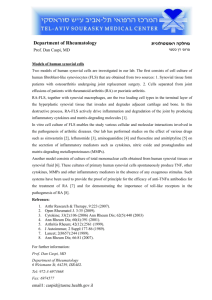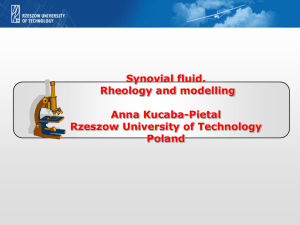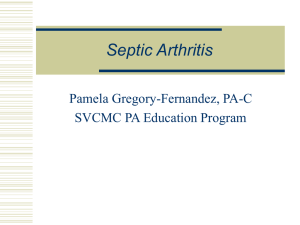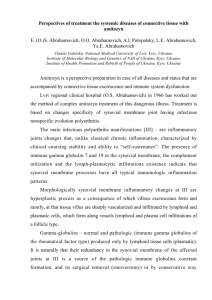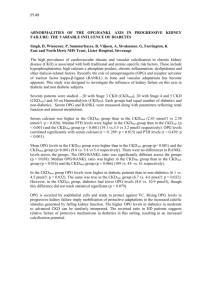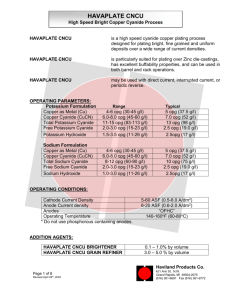Word file (32 KB )
advertisement
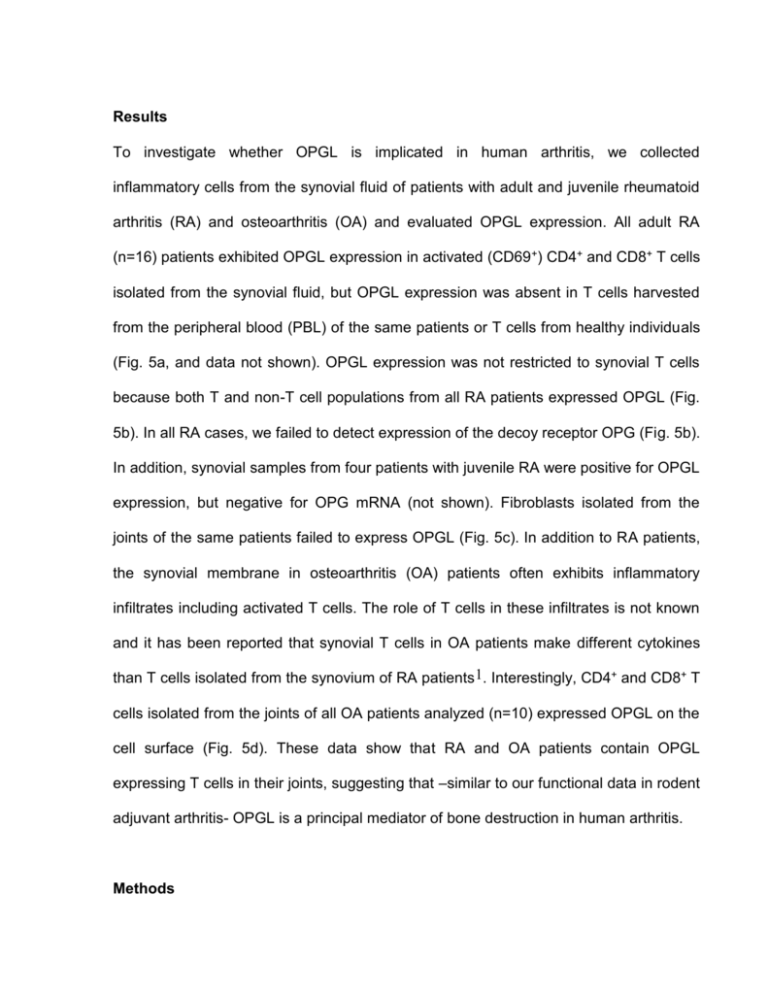
Results To investigate whether OPGL is implicated in human arthritis, we collected inflammatory cells from the synovial fluid of patients with adult and juvenile rheumatoid arthritis (RA) and osteoarthritis (OA) and evaluated OPGL expression. All adult RA (n=16) patients exhibited OPGL expression in activated (CD69 +) CD4+ and CD8+ T cells isolated from the synovial fluid, but OPGL expression was absent in T cells harvested from the peripheral blood (PBL) of the same patients or T cells from healthy individuals (Fig. 5a, and data not shown). OPGL expression was not restricted to synovial T cells because both T and non-T cell populations from all RA patients expressed OPGL (Fig. 5b). In all RA cases, we failed to detect expression of the decoy receptor OPG (Fig. 5b). In addition, synovial samples from four patients with juvenile RA were positive for OPGL expression, but negative for OPG mRNA (not shown). Fibroblasts isolated from the joints of the same patients failed to express OPGL (Fig. 5c). In addition to RA patients, the synovial membrane in osteoarthritis (OA) patients often exhibits inflammatory infiltrates including activated T cells. The role of T cells in these infiltrates is not known and it has been reported that synovial T cells in OA patients make different cytokines than T cells isolated from the synovium of RA patients 1. Interestingly, CD4+ and CD8+ T cells isolated from the joints of all OA patients analyzed (n=10) expressed OPGL on the cell surface (Fig. 5d). These data show that RA and OA patients contain OPGL expressing T cells in their joints, suggesting that –similar to our functional data in rodent adjuvant arthritis- OPGL is a principal mediator of bone destruction in human arthritis. Methods OPG and OPGL expression in RA patients. Synovial fluid samples were collected from 16 adult and 4 juvenile RA patients and 10 adult OA patients seen at Mount Sinai and Wellesley Central Hospitals in Toronto who presented with seropositive RA and OA according to the American College of Rheumatology criteria. Patients were receiving a non-steroidal antiinflammatory drug and a remittive agent. Human experiments were approved by the Ethics Committee. Isolation of mononuclear cells from synovial fluid was carried out by density gradient centrifugation on a Ficoll-Hypaque Plus gradient (2200 rpm for 35min at room temperature). Mononuclear cells were separated into T cell and non-T cell populations using a standard rosetting protocol as described 2. In parallel, fibroblasts were isolated from joints of adult RA patients. OPG and OPGL expression were determined by RT-PCR using 100ng of total RNA (RNeasy mini kit; Qiagen). PCR primers were: -actin sense: GGG ACC TGA CTG ACT ACC T; -actin anti-sense: CTA GAA GCA TTT GCG GTG GA; OPG sense: AAG GAG CTG CAG TAC GTC; OPG anti-sense: ACC AAG ACA CTA AGC CAG T; OPGL sense: AAA TCC CAA GTT CTC ATA CCC; OPGL anti-sense: TCT CAT AAG GTC AAC CCG TAA. OPG and OPGL cDNAs were used as positive controls. For detection of OPGL protein, T cells were isolated from synovial fluid and peripheral blood of RA and OA patients and triple stained with OPG-Fc-FITC, CD69-PE and CD4-Tricolor or CD8-PerCP (Becton-Dickinson). Viable cells were collected and analyzed by FACS. References 1. Sakkas, L.I. et al. T cells and T-cell cytokine transcripts in the synovial membrane in patients with osteoarthritis. Clin Diagn Lab Immunol 5, 430-437 (1998). 2. Chen, E., Keystone, E.C. & Fish, E.N. Restricted cytokine expression in rheumatoid arthritis. Arthritis Rheum 36, 901-910 (1993). Figure 5. OPG and OPGL expression in synovial fluid cells from RA and OA patients. a. Lymphocytes were isolated from synovial fluid and peripheral blood of RA patients. OPGL and CD69 expression on the surface of CD4 + and CD8+ cells was detected by FACS analysis. CD69 expression was analyzed as a positive control for the extent of activation (activated T cells are CD69+). One representative result of 16 RA patients is shown. b. Synovial fluid cells were collected from RA patients and separated into T (T) and non-T (NT) cell populations. OPG and OPGL expression was detected by RT-PCR. -actin expression is shown as a control. Representative samples from 5 different adult RA patients are shown. C = cDNA control. c. OPGL expression was determined in fibroblasts isolated from the same patients as in b. d. T cells were isolated from the synovial fluid of osteoarthritis patients and surface expression of OPGL on CD4 + and CD8+ cells was detected by FACS. Three different patient samples representative of 10 osteoarthritis patients are shown. In these patients, OPGL expression was not detectable on peripheral blood T cells (not shown).
